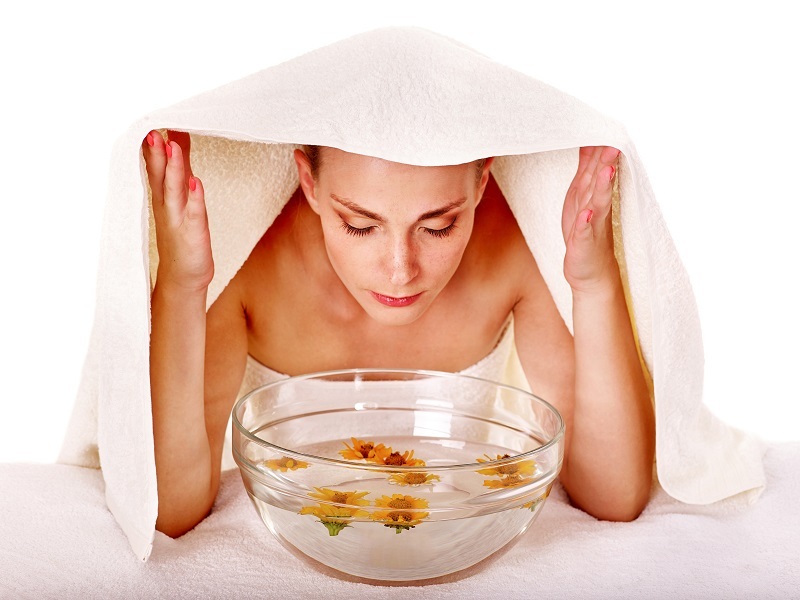Unlocking Lush Hydrangeas: A Caregiver's Guide
Posted on 14/08/2025
Unlocking Lush Hydrangeas: A Caregiver's Guide
Hydrangeas are famous for their voluminous blooms and stunning color variations, making them the pride of many gardens across the world. If you've ever wondered how to unlock the full, lush potential of your hydrangea plants, you're in the right place. In this comprehensive guide, we explore expert-approved techniques and care strategies to achieve vibrant, healthy hydrangeas that thrive year after year. Whether you are a seasoned gardener or nurturing hydrangeas for the first time, this guide will equip you with the knowledge to elevate your garden's beauty.
Understanding Hydrangeas: An Overview
Before diving into the intricacies of hydrangea care, it's essential to understand the basics of these captivating plants. Hydrangeas are versatile flowering shrubs native to Asia and the Americas. They belong to the family Hydrangeaceae, boasting over 70 species and numerous cultivars.
- Bigleaf Hydrangea (Hydrangea macrophylla):
- Notable for its ability to change bloom color based on soil pH.
- Panicled Hydrangea (Hydrangea paniculata):
- Known for its cone-shaped flower heads and robust growth.
- Oakleaf Hydrangea (Hydrangea quercifolia):
- Distinguished by its deeply lobed leaves and tolerance to drier soils.
- Smooth Hydrangea (Hydrangea arborescens):
- Best for native plant gardens and shade.
Each hydrangea species has its unique charm and specific care requirements, but the foundation of luxuriant blooms is universal across varieties.

1. Choosing the Right Location
The Importance of Sunlight
To achieve lush hydrangea blooms, start by selecting the right spot in your garden. Most hydrangeas grow best with morning sunlight and afternoon shade. Excessive direct sunlight, especially in hotter climates, can lead to wilting and faded flowers, while too little light limits growth and flower production.
- Bigleaf and Oakleaf hydrangeas prefer dappled shade or filtered sunlight.
- Panicled and Smooth hydrangeas can withstand more sun, especially in northern regions.
Soil Preferences
Unlocking lush hydrangea growth often depends on the soil's drainage and fertility. Hydrangeas thrive in rich, well-draining soils with a high organic content. Clay-heavy soils may cause stagnation and root rot, while sandy soils might not retain enough moisture.
- Ideal Soil pH: 5.2 to 6.2 for blue flowers, 6.0 to 6.4 for pink flowers (specific to Bigleaf hydrangeas).
- Amending Soil: Incorporate compost, leaf mold, or well-rotted manure to improve fertility and structure.
Pro Tip:
Test your soil before planting. Kits are widely available, or you can consult a local extension office for a thorough analysis.
2. Planting Hydrangeas - The Right Way
Your path to vibrant hydrangea plants begins with proper planting. The best time to plant hydrangeas is in the fall or early spring when temperatures are moderate and the plant has time to establish roots before the blooming season.
- Dig holes twice as wide as the root ball but no deeper. This allows roots to spread outward easily.
- Place the plant at ground level--never deeper, as this can suffocate the roots.
- Backfill with enriched soil and water thoroughly to settle the plant.
- Mulch around the base to conserve moisture and suppress weeds.
Caring for newly planted hydrangeas is especially crucial--consistent watering, mulching, and avoiding excess fertilizer ensure healthy establishment.
3. Watering: The Essence of Lush Hydrangeas
Hydrangeas get their name from the Greek "hydor," meaning water. Consistent moisture is non-negotiable for lively, full hydrangea blossoms and healthy foliage.
- Deep watering encourages root growth and drought resilience. Aim for at least 1 inch of water per week, more during dry spells.
- Morning watering reduces risk of fungal diseases.
- Mulch preserves soil moisture and prevents temperature fluctuations.
Avoid water stress: Both overwatering and underwatering can harm your hydrangeas. Wilting, leaf drop, and poor blooms often point towards inconsistent watering practices.
4. The Art of Pruning for Lush Hydrangeas
Why Pruning Matters
Pruning is essential to unlock the lush potential of hydrangeas--it controls size, improves air circulation, and encourages prolific flowering. However, the technique and timing depend on your hydrangea species.
Pruning Guidelines by Species
- Bigleaf & Oakleaf Hydrangeas: Bloom on old wood (last year's stems). Prune just after flowering--late summer or early fall.
- Panicled & Smooth Hydrangeas: Bloom on new wood. Prune in late winter or early spring before new shoots appear.
How to Prune:
- Remove dead or crossing stems.
- Thin out the oldest wood at the base to stimulate new growth.
- Shape by cutting back tips as needed.
Avoid heavy pruning for the wrong species--it can reduce the following season's blooms.
5. Fertilization: Nourishing Hydrangeas for Vigor
Lush hydrangea care includes a feeding regimen that balances nutrients without overwhelming the plants.
- Spring Application: Use a balanced, slow-release fertilizer with a ratio such as 10-10-10 or 14-14-14.
- Organic Boost: Compost, worm castings, and fish emulsion add gentle nourishment.
- Avoid excess Nitrogen: Too much nitrogen yields leafy growth but fewer blooms.
Tip: Always follow package instructions to avoid fertilizer burn. For pH-sensitive hydrangeas, choose products that won't disrupt the desired color.
6. Changing Hydrangea Blossom Colors
One of the wonders of hydrangea plant care, particularly with Hydrangea macrophylla, is the ability to influence flower color by adjusting soil pH.
- Blue Blooms: Lower soil pH (acidic soil) by adding aluminum sulfate or pine needles.
- Pink Blooms: Raise soil pH (more alkaline) with lime or wood ash.
Note that white hydrangeas typically remain white regardless of soil amendments.
7. Disease and Pest Management
Common Problems
Healthy, lush hydrangea plants are generally resilient, but they are still vulnerable to:
- Powdery Mildew: Appears as a white, powdery residue on leaves.
- Leaf Spot: Brown or purple spots may develop, especially in humid conditions.
- Aphids & Spider Mites: Suck sap from leaves, causing deformation and yellowing.
Solutions
- Good Spacing: Ensures airflow and reduces humidity around plants.
- Neem Oil: A natural remedy for most pests and fungal diseases.
- Avoid Overhead Watering: Water at the soil level to prevent moisture on foliage.
Vigilant monitoring is key--catching issues early ensures robust hydrangea health.
8. Overwintering Hydrangeas
Proper winter protection helps ensure lush hydrangea displays the following spring. The approach largely depends on the species and your climate zone.
- Mulch base heavily with straw, chopped leaves, or pine needles after the first frost.
- Wrap shrubs in burlap in colder regions to shield buds from harsh winds and temperature drops.
- Container hydrangeas should be placed in a sheltered garage or basement over winter.
Do not prune hydrangeas late in the growing season, as this can trigger fresh growth susceptible to frost damage.
9. Extending Bloom Time and Maximizing Impact
Deadheading and Maintenance
Regular deadheading (removing spent flowers) keeps hydrangeas looking neat and may encourage additional blooms, especially with reblooming cultivars like 'Endless Summer'.
- Snip spent blooms just above a pair of healthy leaves.
- Trim away any damaged or drooping stems.
Companion Planting for Hydrangeas
Enhance your hydrangea display by pairing with compatible plants that provide contrasting foliage or complementary colors.
- Hostas: Thrive in similar shade and soil conditions.
- Ferns: Add fine texture and lush green backdrops.
- Heuchera and Astilbe: Offer bursts of color and varied heights.
10. Propagating Hydrangeas - Share the Beauty
Lush hydrangea shrubs can be propagated easily by softwood cuttings or layering techniques:
- Take softwood cuttings (spring or early summer) from non-flowering shoots, dip in rooting hormone, and plant in moist, sterile growing medium.
- Try layering: Bend a low branch to soil level, secure it, and cover with soil. Roots will form--simply cut the stem and transplant after a few months.
Propagation is a fun way to expand your collection or share your success with friends and family!
Troubleshooting Common Hydrangea Issues
-
No Blooms?
- Pruned at the wrong time--wait for the correct post-flowering periods.
- Cold damage--late frosts can kill budding blooms. Protect early with covers if frost is forecasted.
- Excess nitrogen--use a balanced fertilizer.
-
Leaf Yellowing?
- Poor drainage--raise beds or amend heavy soil.
- Iron deficiency--test soil pH and adjust if needed.
-
Wilting Leaves?
- Water stress is the usual culprit. Adjust watering schedule and check for rootbound conditions in pots.

Frequently Asked Questions About Hydrangea Care
Can I grow hydrangeas indoors?
While hydrangeas can be started indoors, they do best outdoors where they receive natural seasonal cues to bloom and rest.
Should I cut back hydrangeas after they bloom?
It depends on the type. Only prune Bigleaf and Oakleaf hydrangeas after they flower. For Panicled and Smooth hydrangeas, late winter or early spring pruning is best.
When do hydrangeas bloom?
Bloom time varies by species, but most hydrangeas flower from late spring through early fall.
Why are my hydrangea flowers green?
This often happens as blooms age or due to improper pH. Some cultivars naturally turn green as their blooms fade.
Unlock the Beauty of Your Hydrangeas
Unlocking lush hydrangeas doesn't require luck--it's all about following science-backed care practices tailored to your plant's specific needs. By selecting a suitable growing location, maintaining optimal water and nutrient levels, pruning appropriately, and addressing pest or disease issues promptly, your hydrangeas will reward you with unforgettable garden displays year after year.
Start applying these techniques today and watch as your garden flourishes with healthy, abundant blooms. Hydrangea care isn't just a gardening task--it's an art, and you're the artist.
Ready to transform your landscape? Unlock the secret to lush hydrangeas and enjoy the spectacular visual rewards season after season!
Latest Posts
Unlock Orchid Care Hacks for Stunning Blooms
The Magic of Sunflowers: 8 Facts to Discover
Which flower matches the rhythm of your soul





